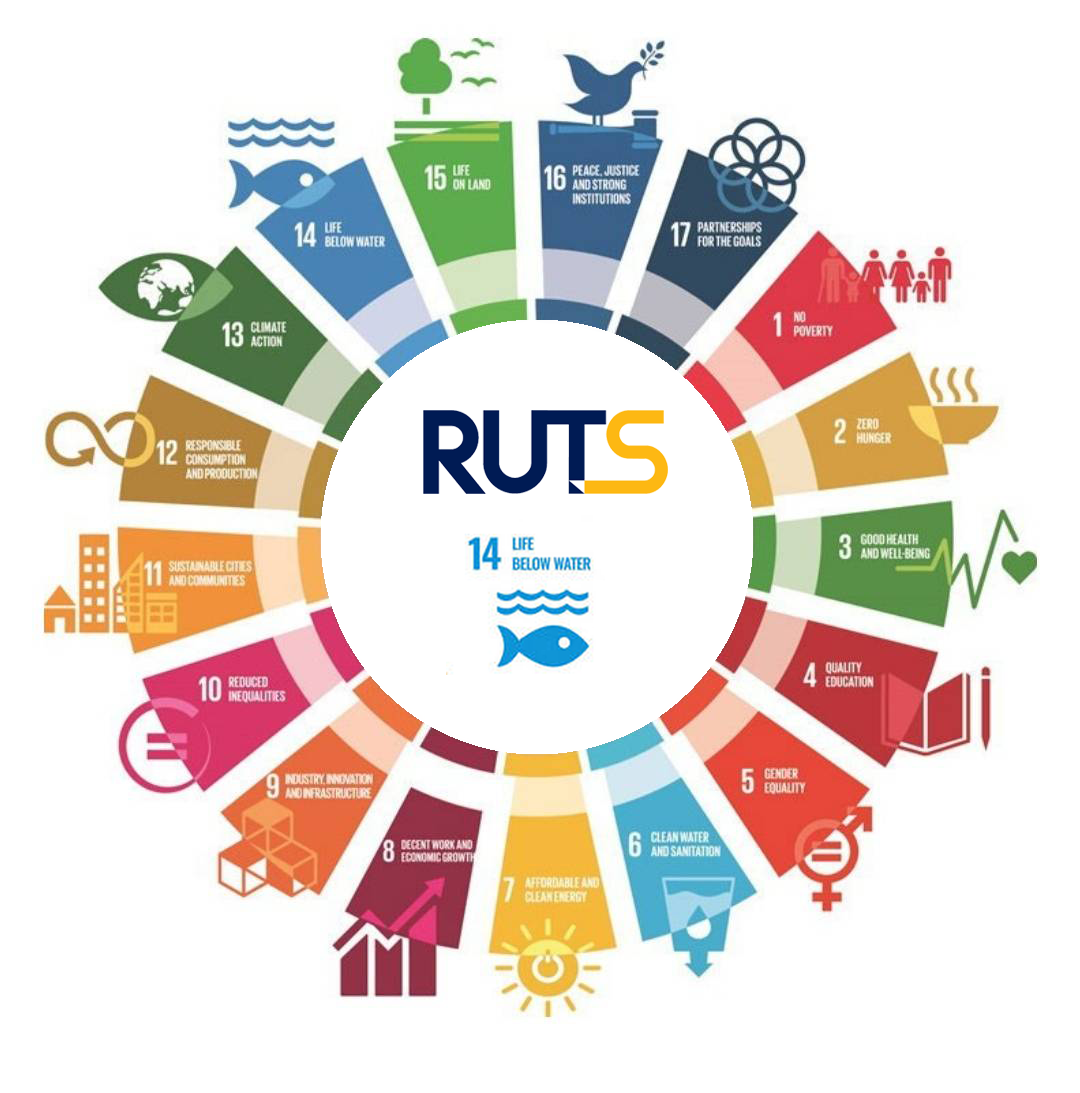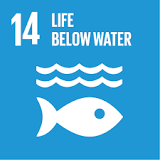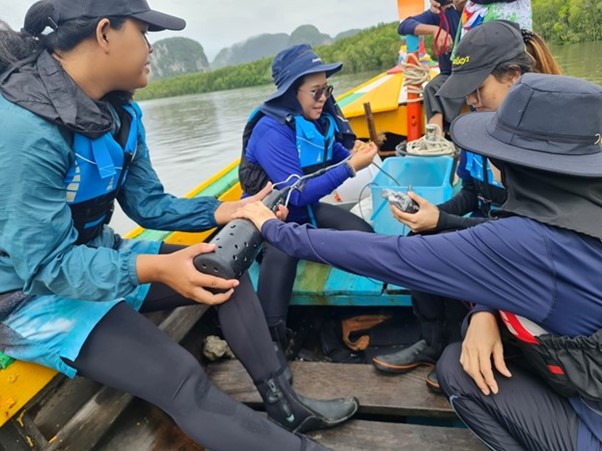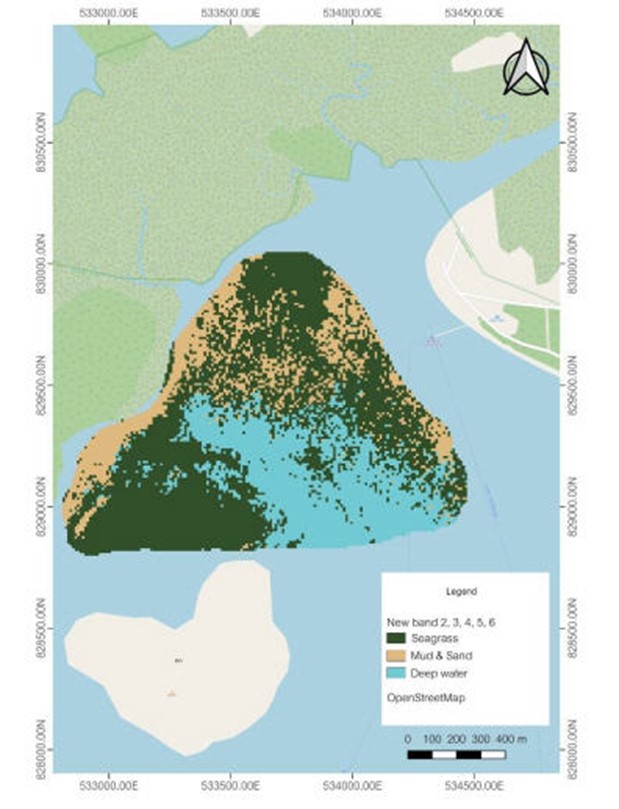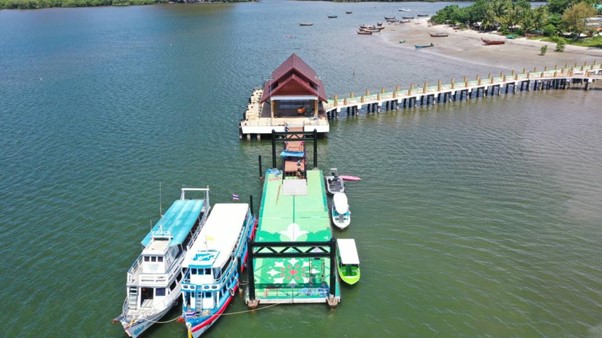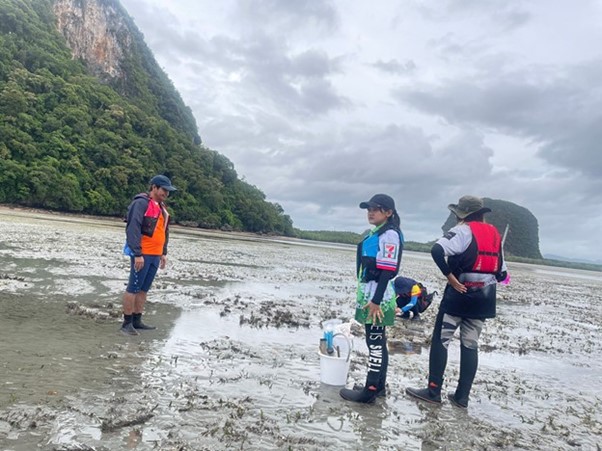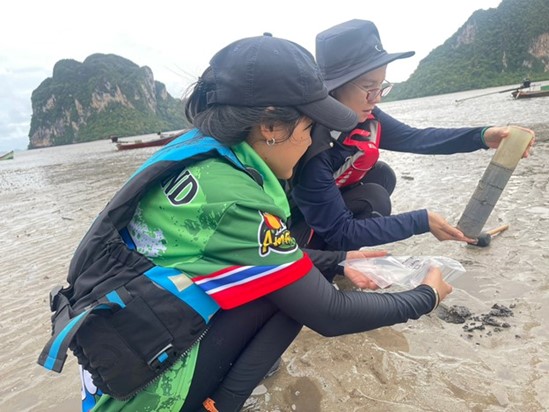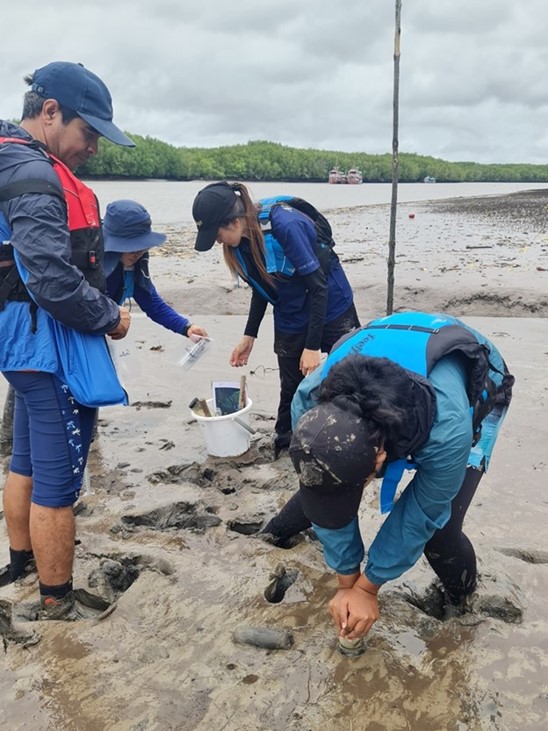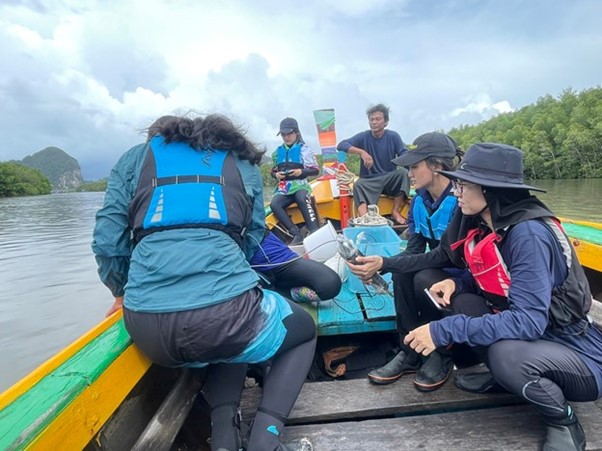|
Indicator 14.5.2
Research and Innovation
Scientific monitoring to alert the potential effects of dredging on seagrass health
October 15, 2023
Seagrass beds are critical marine ecosystems that link mangrove forests and coral reefs. They provide essential habitat and nursery grounds for a wide range of marine life, including fish, shellfish, invertebrates, and marine mammals. Seagrass meadows also play a vital role in coastal fisheries, supporting a diverse array of economically important species. Additionally, seagrass beds sequester carbon and improve water quality, making them essential for coastal resilience.
In Thailand, seagrass beds are widely distributed throughout the Gulf of Thailand and the Andaman Sea, covering 53.2 km2 and 159.4 km2, respectively. Trang Province, located on the Andaman coast, has 33.7 km2 of seagrass meadows. The seagrass bed in Kam Bay is part of the Trang province's seagrass meadows. The dominant seagrass species in Kam Bay are Enhalus acoroides, Halophila ovalis, Cymodocea serrulata, Cymodocea rotundata, and Halodule uninervis.
Seagrass beds are declining worldwide, with a particularly alarming rate of decline in Southeast Asia. At the local scale, these declines can be attributed to a variety of anthropogenic disturbances, including eutrophication, and sedimentation. Seagrass meadows are threatened by sedimentation, which can bury seagrass blades and rhizomes and reduce visibility, making it difficult for seagrass to photosynthesize. The seagrass meadow in Kam Bay is impacted by sedimentation due to its proximity to the mouth of the Pak Meng River and Pak Meng Pier. This makes it susceptible to suspended sediment from two sources: 1. Suspended sediment from the Pak Meng River: The Meng river carries sediment from its upstream watershed, which is deposited at its mouth. This sediment can then be transported by currents and tides into the seagrass meadow. 2. Sediment from boat propellers at Pak Meng Pier: Medium-sized and large marine ships create water pressure as they move through the water, which can resuspend sediment from the bottom of the pier. This sediment can then be transported into the seagrass meadow.
In addition, dredging activities at piers are routinely conducted to support navigation and maritime tourism development. However, this activity can have a significant impact on marine resources, particularly seagrass meadows, due to the generation of sediment. Therefore, it is necessary to have scientific information to alert the potential effects of dredging on marine ecosystems, such as seagrass meadows.
Rajamangala University of Technology Srivijaya (RUTS) has played a critical role in monitoring the health of seagrass ecosystems in Trang province, Thailand. During December 2022-September 2023, Assistant Professor Dr. Woraporn Tarangkoon, a marine biologist, led a project to monitor seagrass, water quality, and sediment quality in the dredging project of Pak Meng Port, Trang Province, Thailand. The project was supported by Sangcharoen Marine Service Company Limited and focused on seagrass health surveys and environmental assessments in the area of Kam Bay.
This information from the project will provide baseline environmental information on coastal areas and can be used to assess the potential impacts of dredging, which can generate sediment and potentially negatively impact seagrass beds.
Related Links: https://www.facebook.com/photo?fbid=777053417761022&set=pcb.777054097760954
https://www.facebook.com/photo/?fbid=777053681094329&set=pcb.777054097760954
|
||||||

